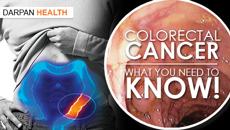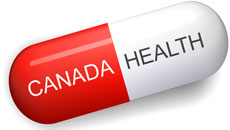Cholesterol levels can affect your cardiovascular health and can contribute to cardiovascular disease. Cardiovascular disease includes diseases of the heart and all blood vessels in the body, but most importantly those blood vessels leading to the brain and the heart itself. When there are problems with the blood vessels to the brain, oxygen supply to the brain can be slowed or stopped, and this is called a stroke. When there are problems with the blood vessels to the heart, oxygen supply to areas in the heart muscle can be slowed or stopped and this may be called angina or heart attack. South Asian people are known to be at a greater risk for cardiovascular disease.
Your Body Needs Cholesterol
A fat-like substance, cholesterol is needed to make certain hormones, vitamin D and substances for digestion. Cholesterol is also needed to help your body cells work properly. Your liver makes most of the cholesterol that you need. You also get cholesterol from the foods you eat. Later in the article we will talk about cholesterol in your diet.
Lipoproteins are chemical packages that carry cholesterol in your blood. Most lipoproteins are either low density lipoproteins (LDL’s) or high density lipoproteins (HDL’s). Most people simply refer to these as LDL’s and HDL’s. Together, LDL’s and HDL’s make up your total cholesterol. When you get a cholesterol blood test, your doctor will look at your total cholesterol level, as well as the amounts of LDL’s and HDL’s. It is important to know the difference between LDL’s and HDL’s.
Low density lipoproteins (LDL’s) carry cholesterol from the liver to your body cells. If there is too much cholesterol, some of the leftover cholesterol will be laid down on the inside of blood vessels. Let’s do a quick review of blood vessels, cholesterol and cardiovascular health.
Cardiovascular Health and Cholesterol
Blood vessels in the body, large and small, are either arteries or veins. Arteries take oxygen and nutrients to the cells of the body. Veins take blood back to be refilled with oxygen and nutrients. Cholesterol that ends up on the inside walls of arteries contributes to a buildup of plaque. When there is a buildup of plaque, the space inside of the arteries becomes smaller. Blood flow is slowed and the oxygen and nutrients do not get to the body cells as they should.
When there is plaque buildup on the inside walls of arteries, red blood cells can get stuck at the site of the buildup. Red blood cells should run smoothly through your arteries. When enough red blood cells get stuck, a clot may form. Blood flow can be slowed due to the clot. Blood clots can also travel to other parts of the body. It is especially dangerous when clots travel to the brain, heart or lungs.
The Good & The Bad
Because LDL’s play a role in plaque buildup, they are sometimes referred to as ‘bad’ cholesterol. An easy way to remember this is that low density lipoproteins (LDL’s) should be low.
HDL’s help to take cholesterol away from the cells back to the liver. This is a good thing. The liver can get rid of the extra cholesterol and it is less likely that plaque will build up. High density lipoproteins (HDL’s) should be high. They are thought of as ‘good’ cholesterol.
Another way to think of this is that the higher your HDL’s are, the less likely you are to get cardiovascular disease. The higher your LDL’s are the more likely you are to get cardiovascular disease. People don’t feel sick when their cholesterol is at an unhealthy level, so this risk for cardiovascular disease might not be noticed.
High total blood cholesterol (more than 6.2 mmol/L), according to the Public Health Agency of Canada, is a risk for cardiovascular disease. When you have your cholesterol checked, talk with your doctor about what the numbers mean. Remember that total cholesterol is made up of LDL’s and HDL’s and the amounts of these are as important as the actual number for the total cholesterol.
South Asian People Have a Greater Risk for Cardiovascular Disease
Think of your doctor as your partner for good health. You can ask your doctor about testing your cholesterol. South Asian people should pay close attention to their cardiovascular health, as they have an increased risk for cardiovascular disease. As well, people of South Asian origin have a greater likelihood of serious complications and death when they get cardiovascular disease.
The good news is that while it is generally accepted that South Asians have a genetic tendency to be at risk for cardiovascular disease, some experts feel that lifestyle is accountable for much of the risk. Changes in lifestyle can help to lower the total cholesterol if it is high, as well as decrease LDL’s and increase HDL’s. Exercise and healthy diet are important ways to take care of cardiovascular health.
Lower the Bad and Raise the Good with Healthy Fats
South Asians have a rich culture and love to get together with family and friends. Many of these social gatherings revolve around much-loved South Asian cuisine. Cooking methods using a lot of fat and deep frying are often risky for the development of cholesterol problems because of the type of fat used.
You need a small amount of fat in your diet, but that fat should be the healthy kind. Unsaturated fats can improve cholesterol levels. According to the Heart and Stroke Foundation, healthy fats are usually unsaturated fats (also called monounsaturated fats and polyunsaturated fats). Canola oil, olive oil and nuts oils are all examples of monounsaturated fats. Examples of foods where polyunsaturated fats are found are safflower oil, canola oil, flaxseeds, fish and some nuts.
Saturated fats are not healthy kinds of fats because they can raise the bad cholesterol, or LDL’s. Fatty meats, creamy dairy products, full-fat dairy products, ghee and palm oil are examples of saturated fats. Trans fats, such as the fat that is found in shortening and hydrogenated vegetable oils, is not a good type of fat to include in your diet. This type of fat is often found in packaged food or fast food and it can be bad for your cholesterol levels.
You can get more information on good fats and bad fats, including special information for South Asian cooking, on the Heart and Stroke Foundation website. There are ways to still enjoy your favourite recipes, while cutting down on the bad fats.
Food As Medicine?
Recent research indicates that certain foods can actually lower cholesterol. Foods that contain soluble fiber such as oats and other whole grains bind with substances in the digestive system so that cholesterol is not absorbed. As well, there are substances in nuts, legumes (beans and peas) and vegetables that can naturally help to reduce cholesterol.
Plant sterols, which occur naturally in many healthy foods, have been shown to lower LDL’s. Health Canada has approved the addition of plant sterols to some foods in order to lower LDL’s. For instance, there are special kinds of margarine that have plant sterols added.
Eating foods high in soluble fiber, such as oats and some other whole grains, plus eating nuts, legumes, vegetables and fruit, will increase your chance of having a healthy cholesterol level.
Lower the Bad and Raise the Good with Exercise
Get active! Some experts say that HDL levels (the good cholesterol) can be raised by regular exercise, losing weight if you are overweight and by not smoking. Exercise should be aerobic exercise. Examples of aerobic exercise include fast-paced walking, swimming, using the treadmill, riding a bicycle and aerobic exercise classes. If you are overweight, exercise has the added benefit of using up calories so your body does not turn the calories into fat.
The Public Health Agency of Canada recommends that you spend at least 2.5 hours a week exercising to get the best health benefits. Medium to hard exercise should be done throughout the week for at least 10 minutes at a time. Making exercise a regular part of your day, along with healthy eating, will help to lower the bad and raise the good cholesterol. If you have a medical condition, you should check with your doctor before starting an exercise program.
If possible, it is best to get your cholesterol to healthy levels without medication. But if your doctor feels that your total cholesterol, LDL’s and HDL’s, are at a level that put you at risk for cardiovascular disease, then you may be prescribed medication that will help to decrease your risk. Some medications help to lower the LDL’s and some help to raise the HDL’s.
More Information Please
There are many ways to get more information. The Heart and Stroke Foundation of BC has excellent information in general, and also has information specifically for South Asians. The Public Health Agency of Canada and Healthlink BC are other excellent sources for up-to-date and reliable information. All of these resources are available through the internet. If you don’t use a computer yourself, have someone look these up for you and print out specific pages. Your doctor may also have information that he/she can give you to take home.
Talk to your family and friends about good and bad cholesterol. Get together with friends to exercise and share recipe ideas using healthy ingredients.






